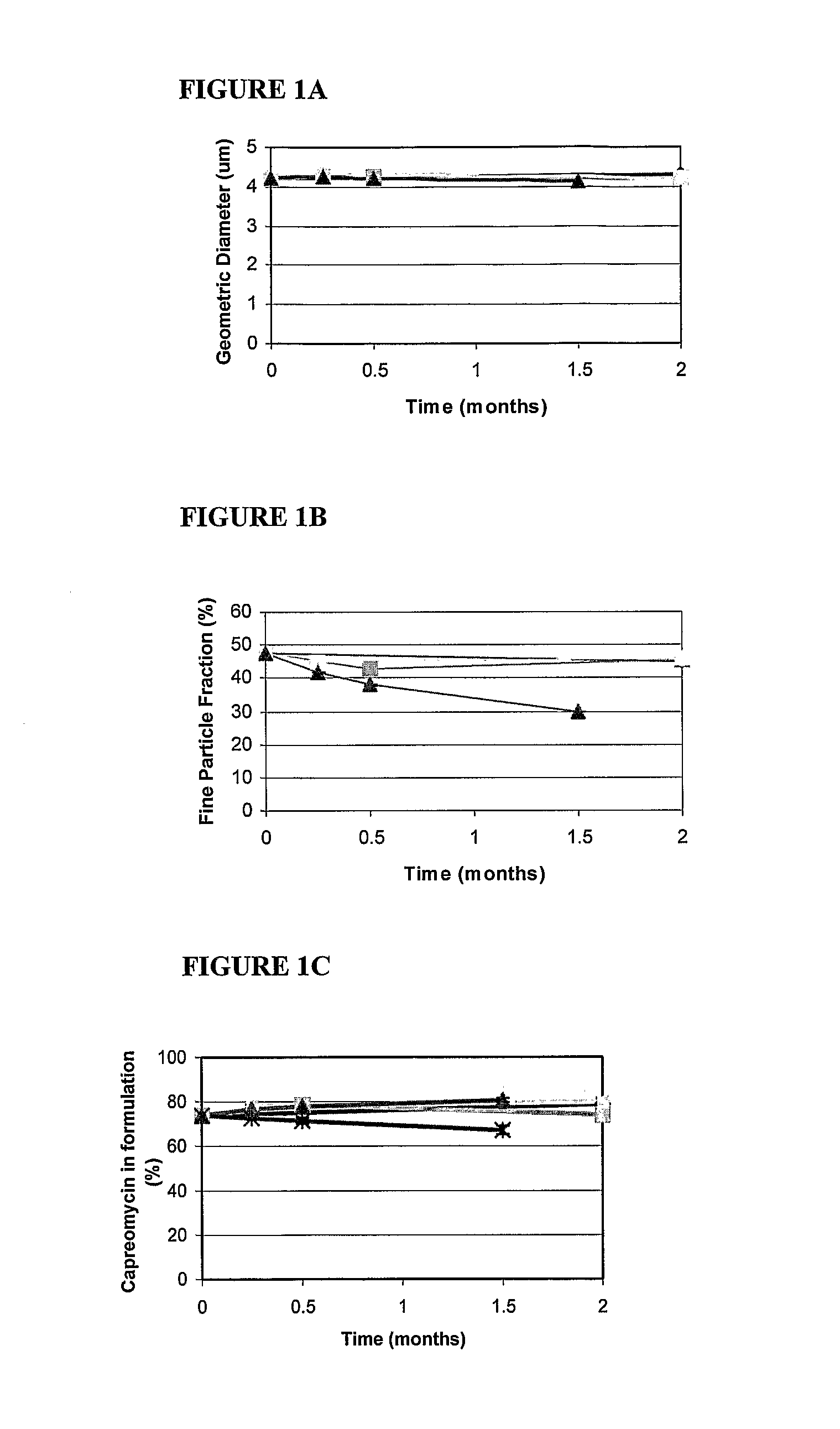Particles for treatment of pulmonary infection
a technology of pulmonary infection and particle particles, which is applied in the direction of antibacterial agents, peptide/protein ingredients, drug compositions, etc., can solve the problems of increased tb, worrisome disease rate, and inability to treat pulmonary infection, and achieve excellent aerodynamic properties, drug loading and stability.
- Summary
- Abstract
- Description
- Claims
- Application Information
AI Technical Summary
Benefits of technology
Problems solved by technology
Method used
Image
Examples
example 1
Large Porous Particles Containing Capreomycin
[0085]Multi-drug resistant tuberculosis (MDR-TB) is emerging as a significant public health threat, creating an unmet medical need that requires the development of new treatment approaches. Direct, topical delivery of antibiotics to infected lungs is used to obtain the primary goal of targeting high drug doses to the site of primary infection for rapid sterilization of the lung mucosa and reduction in the duration of MDR-TB therapy.
[0086]Dry powder aerosols containing 50-80% capreomycin, that exhibit similar physical and aerosolization properties, have been made. Aerosols with geometric diameters ranging from 2-10 μm and aerodynamic diameters in the 5-6 μm range were formed by spray drying. Optimization of processing parameters increased powder yields up to 60% prior to large batch scale-up. The aerosols show excellent storage capacity at refrigerated, room temperature, and accelerated (40° C.) conditions, with both the chemical and physi...
PUM
| Property | Measurement | Unit |
|---|---|---|
| volume median geometric diameter | aaaaa | aaaaa |
| volume median geometric diameter | aaaaa | aaaaa |
| volume median geometric diameter | aaaaa | aaaaa |
Abstract
Description
Claims
Application Information
 Login to View More
Login to View More - R&D
- Intellectual Property
- Life Sciences
- Materials
- Tech Scout
- Unparalleled Data Quality
- Higher Quality Content
- 60% Fewer Hallucinations
Browse by: Latest US Patents, China's latest patents, Technical Efficacy Thesaurus, Application Domain, Technology Topic, Popular Technical Reports.
© 2025 PatSnap. All rights reserved.Legal|Privacy policy|Modern Slavery Act Transparency Statement|Sitemap|About US| Contact US: help@patsnap.com

